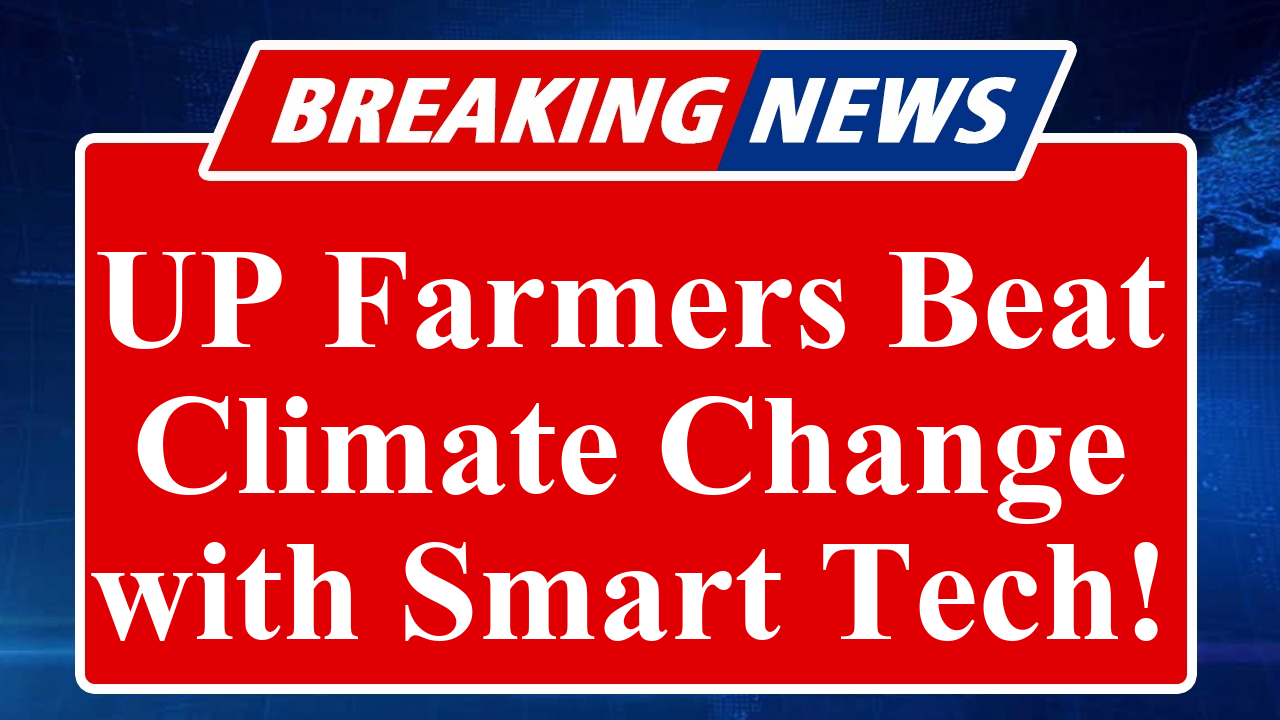“Uttar Pradesh farmers are leveraging advanced weather technologies like AI-driven forecasts, satellite imagery, and IoT devices to tackle climate challenges. These tools provide real-time data on weather, soil, and crops, enabling precise farming decisions. With erratic monsoons and rising temperatures, such innovations boost yields, reduce losses, and promote sustainable agriculture, transforming UP’s farming landscape.”
UP’s Farmers Turn to Weather Tech to Navigate Climate Challenges
In Uttar Pradesh, India’s agricultural heartland, farmers are increasingly adopting advanced weather technologies to counter the growing unpredictability of climate patterns. With over 60% of the state’s agriculture dependent on monsoons, erratic rainfall, heatwaves, and unseasonal storms have posed significant threats to crop yields and farmer livelihoods. Recent advancements in climate tech, including AI-powered weather forecasting, satellite-based crop monitoring, and IoT-driven precision agriculture, are empowering farmers to make informed decisions, optimize resources, and enhance resilience.
The Indian Meteorological Department (IMD) has rolled out initiatives like the Bharat Forecast System, a high-resolution weather prediction model launched in 2025, to provide hyper-local forecasts. In UP, farmers in districts like Varanasi, Gorakhpur, and Lucknow are accessing real-time weather updates through the IMD’s Mausam App and WhatsApp-based alerts. These tools deliver precise data on rainfall, temperature, and humidity, helping farmers plan sowing, irrigation, and harvesting with greater accuracy. For instance, in the flood-prone eastern UP, timely alerts about heavy rainfall have enabled farmers to protect crops like rice and wheat from waterlogging.
Agri-tech startups are also playing a pivotal role. Companies like Farmonaut and CropIn are deploying satellite imagery and AI-driven platforms to monitor crop health, soil moisture, and pest risks. In 2025, Farmonaut’s platform, accessible via mobile apps and APIs, has reached thousands of smallholder farmers in UP, offering personalized advice on crop selection and irrigation schedules. For example, farmers in Agra have used satellite data to shift to drought-resistant maize varieties, reducing water usage by up to 30%. These platforms also integrate weather data to predict pest infestations, allowing farmers to apply pesticides judiciously, cutting costs and environmental impact.
IoT devices, such as soil sensors and automated weather stations, are gaining traction in UP’s rural belts. In districts like Kanpur and Meerut, farmers are using sensors to monitor soil health and moisture levels in real time. These devices, often subsidized through government schemes like the Agriculture Accelerator Fund, help optimize fertilizer use and irrigation, addressing challenges like soil degradation caused by decades of intensive farming post the Green Revolution. In 2024, a pilot project in Saharanpur saw a 25% increase in wheat yields after farmers adopted IoT-based irrigation systems.
The state government, in collaboration with the Ministry of Agriculture, is promoting climate-smart practices through initiatives like the UP Agribusiness and Rural Transformation (UPART) project. This includes training programs to improve digital literacy among farmers, particularly small and marginal ones who constitute over 80% of UP’s farming community. In 2025, over 10,000 farmers in districts like Bareilly and Moradabad were trained to use mobile apps for weather forecasting and market trends, bridging the rural-urban digital divide.
Despite these advancements, challenges remain. High costs of advanced tools like drones and laser land levelers, which can exceed ₹4 lakh, limit adoption among smallholder farmers. Limited internet connectivity in remote areas like Bundelkhand also hampers access to digital platforms. Experts suggest that scaling up subsidized technology packages and improving rural infrastructure are critical to ensuring equitable access. The global climate tech market, valued at USD 25.32 billion in 2024, is projected to grow at a CAGR of 24.8%, indicating potential for further investment in UP’s agri-tech ecosystem.
Innovations like zero-budget natural farming (ZBNF) and climate-resilient crop varieties are also gaining ground. The Indian Council of Agricultural Research (ICAR) has introduced high-yielding, drought-tolerant varieties of pulses and millets suited to UP’s diverse agro-climatic zones. In 2025, farmers in Allahabad reported a 20% increase in millet production after adopting these varieties, supported by real-time weather data to optimize planting schedules.
As climate change intensifies, UP’s farmers are at the forefront of a technological revolution. By integrating weather tech with traditional knowledge, they are not only safeguarding their livelihoods but also contributing to India’s food security. The synergy of government support, private innovation, and farmer resilience is paving the way for a sustainable agricultural future in the state.
Disclaimer: This article is based on recent news, reports, and insights from sources like the India Meteorological Department, agri-tech platforms, and agricultural research bodies. Data is accurate as of August 2025. Readers are advised to verify real-time information and consult local agricultural experts for specific farming decisions.

